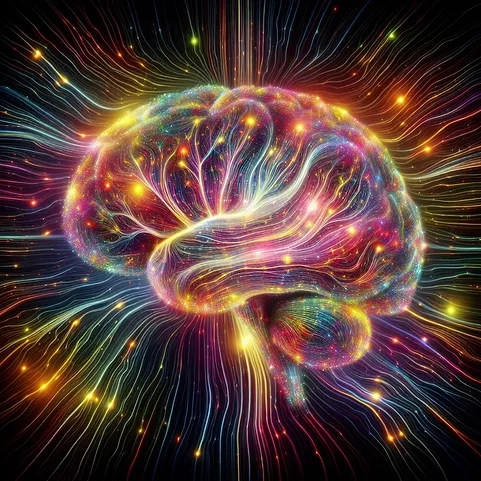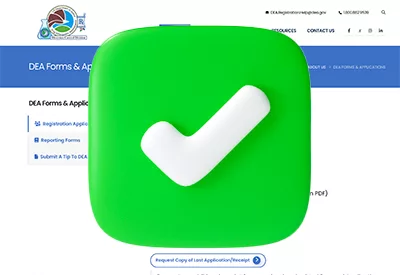Bipolar Disorder and Addiction: Untangling a Complex Overlap

Chris Aiken, MD. Editor-in-Chief, The Carlat Psychiatry Report. Assistant Professor, NYU Langone Department of Psychiatry. Practicing psychiatrist, Winston-Salem, NC.
Dr. Aiken has no financial relationships with companies related to this material.
Substance use and mood disorders often co-occur. When they do, it is difficult to figure out where the symptoms are coming from. Bipolar disorder is an important diagnostic consideration here. In this article, we’ll look at how to recognize bipolar disorder in patients who use substances and what treatment strategies are supported by the evidence.
A vexing diagnosis
People with bipolar disorder are 8–10 times more likely to have a substance use disorder (SUD) than the general population (Radua J et al, Rev Psiquiatr Salud Ment 2023:S1888-9891(23)00006–X). But patients with both conditions rarely present as textbook cases. Instead of clear-cut manic or depressive episodes, patients with bipolar and SUD often experience mixed states or rapid cycling.
In a mixed state, patients often describe feeling ‘tired and wired,’ or ‘driven to do something but I don’t know what.’ They may report irritability, anxiety, insomnia, distractibility, or somatic symptoms. Destructive urges like self-harm or escalating substance use are common as they desperately seek relief (Di Nicola M et al, Psychiatr Clin North Am 2020;43(1):127–137). These episodes can resemble borderline personality disorder, ADHD, PTSD, and substance intoxication, making the bipolar diagnosis easy to miss—especially when substances are involved.
Mixed symptoms are difficult to pin down, so look for these red flags that suggest underlying bipolar disorder:
- A family history of bipolar disorder
- Early onset of mood symptoms in childhood or adolescence
- History of mood destabilization from antidepressants
When these are present, consider a bipolar diagnosis even if the symptoms don’t follow a typical pattern.
Treatment considerations
Management involves treating both mood instability and substance use. Whether these are addressed concurrently or sequentially depends on the patient. A collaborative approach—often involving psychotherapy and pharmacotherapy—yields the best outcomes. For more about collaborating with your patient on medication and therapy approacheds to treatment, see CATR July/August/September 2025.
Alcohol
Among mood stabilizers, valproate (Depakote) has the strongest evidence for reducing alcohol use in patients with bipolar disorder. In a six-month, placebo-controlled trial of 59 patients with active mood symptoms, valproate reduced heavy drinking when added to lithium (average serum level = 51.5 mcg/mL), though it had no effect on mood itself. The benefit may stem from its association with reduced anxiety and dysphoria of mixed mood states—both of which can trigger alcohol use. Despite theoretical concerns about hepatotoxicity, valproate in this study improved gamma-GTP levels and did not elevate other liver enzymes (Salloum IM et al, Arch Gen Psychiatry 2005;62(1):37–45).
Carbamazepine (Tegretol) may also hold promise for patients with comorbid bipolar disorder and alcohol use disorder (AUD). While it has not been studied specifically in this population, the medication is well known as an effective mood stabilizer and has evidence in managing alcohol withdrawal, either alone or in combination with benzodiazepines (Chatlani A et al, Ann Clin Psychiatry 2018;30(4):312–325).
Medications used to treat AUD—naltrexone, acamprosate, gabapentin, and topiramate—for the most part, can be safely combined with mood stabilizers and antipsychotics in bipolar disorder. The exception is carbamazepine, which can lower serum levels of many drugs. Among AUD treatments, carbamazepine lowers topiramate (by 50%–70%), and among bipolar disorder treatments it lowers lamotrigine (50%) and most antipsychotics except asenapine (30%–70%).
A few additional considerations. First, prescribe disulfiram with caution—the impaired decision-making common to manic episodes could result in impulsive drinking and a potentially dangerous disulfiram-alcohol reaction. Also, valproate and carbamazepine are known teratogens, ensure that women of childbearing age are counseled about that risk and the need for effective contraception.
Stimulants
There is sparse evidence for the treatment of patients with bipolar disorder and stimulant use disorders (StimUD), though some possible treatments show promise. One off-label option is the over-the counter supplement citicholine, a naturally occurring, a naturally occurring compound involved in brain cell membrane synthesis. Citicoline is associated with improved mood, cognition, and reduced stimulant use (either cocaine or methamphetamine) in both bipolar and unipolar depression patients in three small, placebo-controlled trials (Brown ES et al, Am J Psychiatry 2015;172(10):1014–1021). It is safe and well-tolerated, with potential neuroprotective effects. Downsides include limited data and cost—typical dosing is 2,000 mg/day at a cost of around $65/month.
Lamotrigine is another option, particularly for bipolar depression. In a large, placebo-controlled trial, it reduced subjective cravings for cocaine though it did not significantly reduce actual use (Brown ES et al, Neuropsychopharmacology 2012;37(11):2347–2354). Nonetheless, lamotrigine’s favorable tolerability profile makes it a reasonable option when depressive symptoms are prominent.
The wakefulness agents modafinil (Provigil) and armodafinil (Nuvigil) have had mixed results. Some studies found reductions in cocaine use and improvements in bipolar depression, while others did not (Sangroula D et al, Subst Use Misuse 2017;52(10):1292–1306; Moosavi SM et al, Addict Health 2019;11(3):165–172; Nunez NA et al, Bipolar Disord 2020;22(2):109–120). Data in methamphetamine use disorder are similarly inconclusive. These medications are generally well-tolerated and may help with fatigue and cognition, but they can be reinforcing, and they do carry a mild risk of medication misuse.
Finally, animal studies suggest that lithium may help mitigate some of the neurotoxic effects of methamphetamine, although these findings have not been confirmed in human trials (Kitanaka N et al, Curr Drug Res Rev 2019;11(2):85–91).
Nicotine
Smoking is highly prevalent in people with bipolar disorder. When treating tobacco use, varenicline is generally preferred over bupropion. Although there have been concerns about mood destabilization with varenicline, a controlled trial in patients with bipolar disorder found no evidence of harm (Chengappa KN et al, J Clin Psychiatry 2014;75(7):765–772). Varenicline is also more effective for smoking cessation than bupropion, including in people with depressive symptoms, and bupropion should generally be avoided in patients prone to mania or mixed states (Zhang H et al, Nicotine Tob Res 2023;25(5):937–944).
Clonidine is another off-label option with potential benefits for smoking cessation, though more commonly used for opioid withdrawal. It has also shown benefit in augmenting lithium for manic episodes (Ahmadpanah M et al, J Psychiatr Res 2022;146:163–171).
Opioids
There is not a lot of research for the treatment of co-morbid opioid use disorder (OUD) and bipolar disorder. However, we do know that the first-line medications for OUD (MOUD)—methadone and buprenorphine—are safe and effective in patients with bipolar disorder. There is no evidence that they destabilize mood, and they can be combined with mood stabilizers and antipsychotics. Caution is warranted with carbamazepine, which may reduce serum levels of MOUD therapies.
Clonidine again plays a role here. While not a replacement for full agonist treatment, it may aid in opioid withdrawal and potentially reduce relapse risk (Kowalczyk WJ et al, Am J Psychiatry 2015;172(8):760–767).
John’s family history and antidepressant-triggered symptoms suggest bipolar disorder, making valproate a logical first choice given his alcohol use.
Carlat Verdict: When bipolar disorder overlaps with an SUD, it often presents with mixed symptoms that may not look like classic bipolar. Several pharmacotherapies are useful in this dual diagnosis, including valproate for bipolar with alcohol use and citicoline for bipolar with cocaine or methamphetamine use disorders. Combining mood stabilizers with addiction-focused medications can improve outcomes and is often necessary in this complex population. See table below for a summary of medication options.


Newsletters
Please see our Terms and Conditions, Privacy Policy, Subscription Agreement, Use of Cookies, and Hardware/Software Requirements to view our website.
© 2025 Carlat Publishing, LLC and Affiliates, All Rights Reserved.


_-The-Breakthrough-Antipsychotic-That-Could-Change-Everything.webp?t=1729528747)



